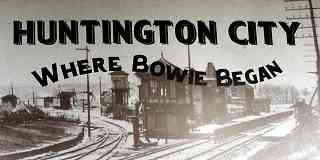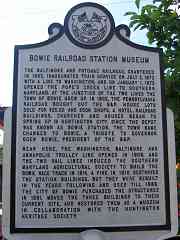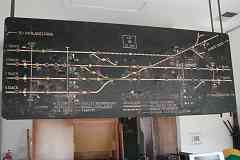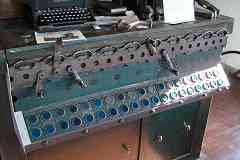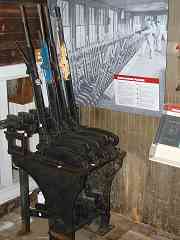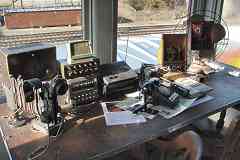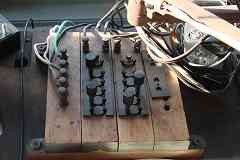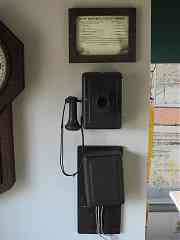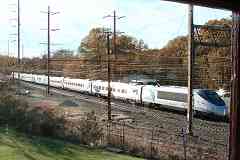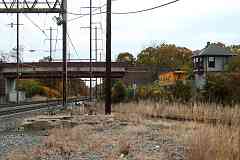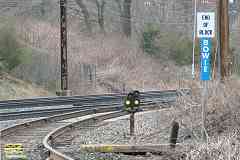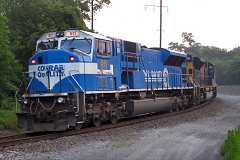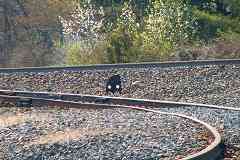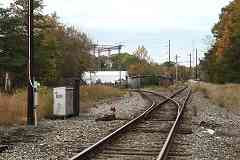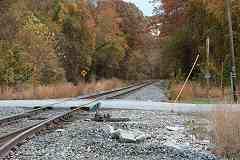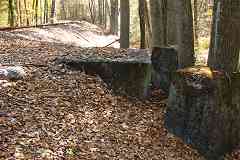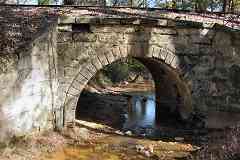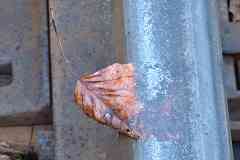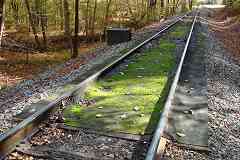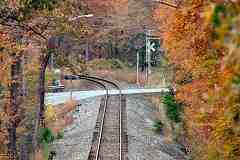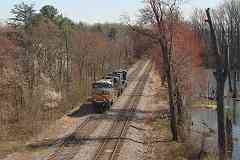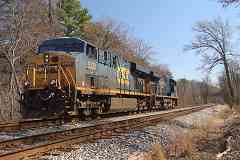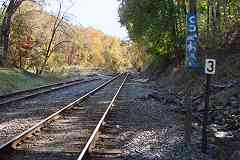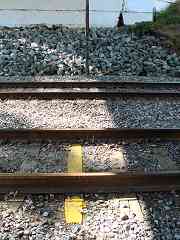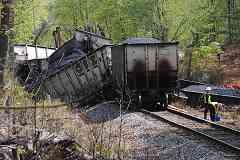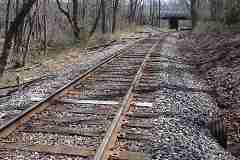The model board shown in the main photo hangs inside the tower where
one also finds its description as shown at right. That description has
been copied below and edited for clarity.
The model board shows all signals and switches connected to the tower.
The tower is depicted in the upper-right hand corner of the board, and marked "BOWIE".
 Tracks are numbered east to west (downward) 1, 2, 3, and 4. (Track 4 doesn't exist today.)
Track 1 branches off the dotted line (non-electrified) track to the Pope's Creek Secondary.
Tracks are numbered east to west (downward) 1, 2, 3, and 4. (Track 4 doesn't exist today.)
Track 1 branches off the dotted line (non-electrified) track to the Pope's Creek Secondary.
S-shaped white lines (best seen in main photo) between the four tracks depict switches with the switch number shown near that line.
For example, if switch 11 is in its normal (straight) setting, a train approaching the tower from the Pope's Creek Secondary will continue onto Track 1.
However, if switch 11 is in what is known as the reverse (diversion) setting, a train approaching the tower from the Pope's Creek Secondary will go to Track 2.
For more information about switches, see Michael Ditkoff's Vantage Point: What Is Normal?
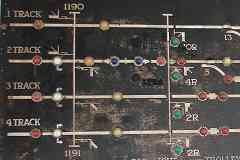 On the board, signals are assigned even numbers and have a green indicator light next to their number.
When a signal is lit at the track, on the board its green light is illuminated, but that does not show the signal's aspect or "setting".
For example, when signal 10L is lit, the signal is telling the train operator that the track is clear for
straight movement forward, and medium clear for reverse movement.
On the board, signals are assigned even numbers and have a green indicator light next to their number.
When a signal is lit at the track, on the board its green light is illuminated, but that does not show the signal's aspect or "setting".
For example, when signal 10L is lit, the signal is telling the train operator that the track is clear for
straight movement forward, and medium clear for reverse movement.
For southbound trains, when the green indicator light for signal 2R is illuminated, that means lever #2 on
the interlocking machine has been rotated to the right. Similarly, for northbound trains signal 2L being
illuminated means lever #2 has been rotated to the left.
Note the pairs of two blue lights on tracks 2 and 3 under "BOWIE". These are "current of traffic" lights.
These remind the tower operator that trains on the corresponding mainline track are moving in a particular direction.
When the blue light of a given pair on the right is illuminated, the "current of traffic" is moving to the
right, in this case southbound, consequently signals can only be set for the southbound direction.
When the blue light on the left is illuminated, signals can only be set for the northbound direction
An illuninated yellow light indicates that track is occupied and the signal has been "knocked down", reduced, to a setting of stop.
